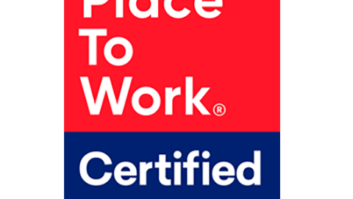There seems to be a prevailing attitude around employee turnover. Usually, it’s seen as a bad thing. Livewire had an outflow of technicians last year darkly labeled “techsodus” (sounds better than it reads). People were leaving. Rumors flew. Was this the end? Who was responsible for all this upheaval?

We use the “keeper” test at Livewire. In short, the keeper test is very simple. Imagine one of your employees walking into your office today and tendering his resignation. Would you fight to keep him? Sometimes the answer is a resounding, “Hell yes!” Other times (more commonly), the answer leans more toward, “Thank goodness!” The keeper test works well and most of our turnover tends to be with folks who don’t pass for one reason or another. There are a few notable exceptions, but 80 percent of the time, both the outgoing employee and the company are better off in the long run.
The only reason we tend to bemoan turnover is due to a lack of steady inbound candidates. By focusing on driving candidate interest and filling the top of the hiring funnel, employees and the organization are in a much better position to create an environment where people want to stay and are reluctant to leave. Moreover, you can turn the seats on the bus into “hot seats” where merely adequate performance is rewarded (according to Erin Meyer and Reed Hastings’ book No Rules Rules) with a generous severance package. I’m not talking about Jack Welch’s “rank-and-yank” strategy where employees were constantly top graded and the bottom 10 percent were fired each year, but an environment where excellence is the norm and the company in turn can afford to pay top-of-market wages for the best talent.
Also by Henry Clifford: Battling Hazardous Attitudes Part 1 – Resignation
We had an amazing technician named Matthew leave this week. I love this guy. He came into my office and turned in his resignation. He passed the keeper test big time. I asked him what he wanted, and the new job sounded perfect for his stated goals. I wished him all the best and told him the door was open anytime he wanted to come back. At our all-hands meeting a few days later, a few of our key people presented Matthew with a commemorative photo collage and said a few words wishing him well. I took the opportunity to praise Matthew publicly as well, doubling down on my stated exhortation to all our employees that my mission is to help them get what they want. Sometimes that isn’t Livewire. Thanks to this approach, our alumni network reaches far and wide inside and outside our industry. I guess it’s true that whatever energy you put out into the universe comes back to you. Call it karma, call it the golden rule, call it whatever you want; it’s real.
Just as Matthew leaves, in comes David, a star player from the electrical world who, in the immortal words of the Bobs from the movie Office Space, “has upper management written all over him.” It’s only because we elevated recruiting new talent earlier this year that we had our eyes open for star power like David.
We’re continuing to raise our bets higher later this month as we launch our first-ever half-day sales training experience and eight-week technician internship program. We’re hellbent on filling these seats with students from local technical high schools and junior colleges. Will we succeed? Who knows, but, as my good buddy Michael Ross often says to me when we’re freezing our rear ends off in a Mississippi duck hole: “Clifford, you ain’t gonna hit any ducks unless you put some steel in the air.”
Also by Henry Clifford: Getting Into A “Day 1” Mindset
Here’s to putting some steel in the air and stabilizing a steady flow of candidates into all our businesses!
What are you doing to drive candidates inbound and normalize turnover?
Stay frosty, and see you in the field.







